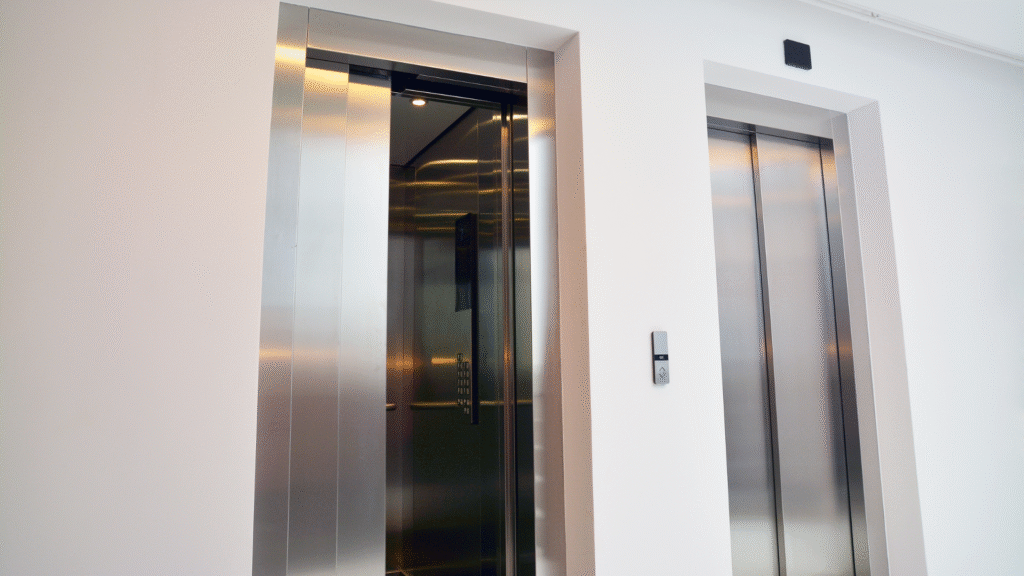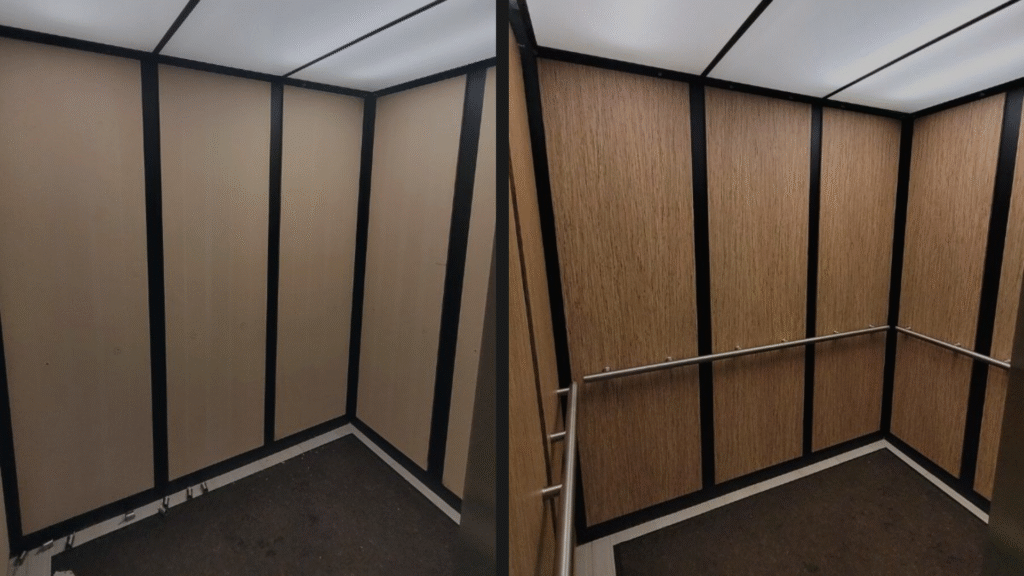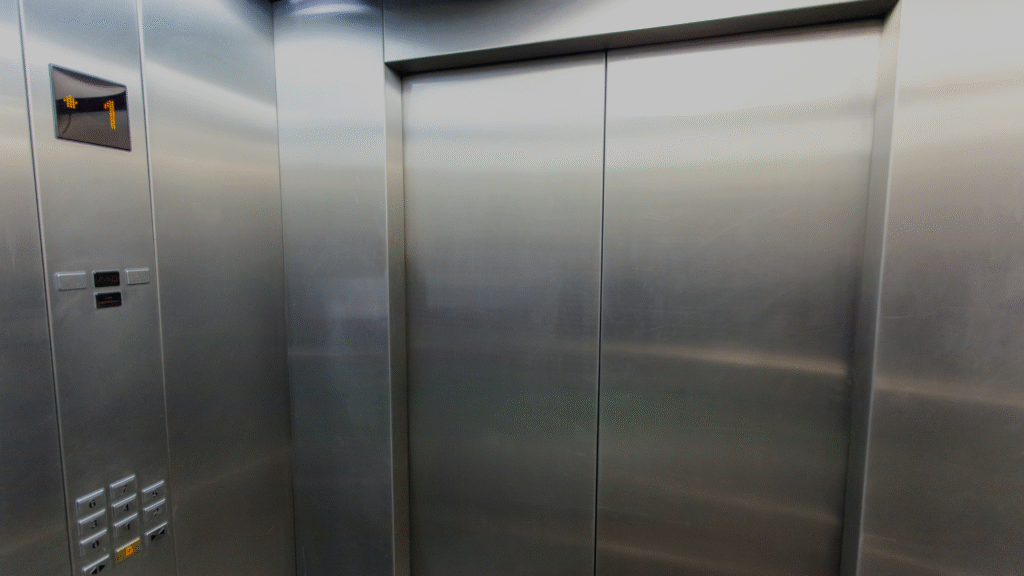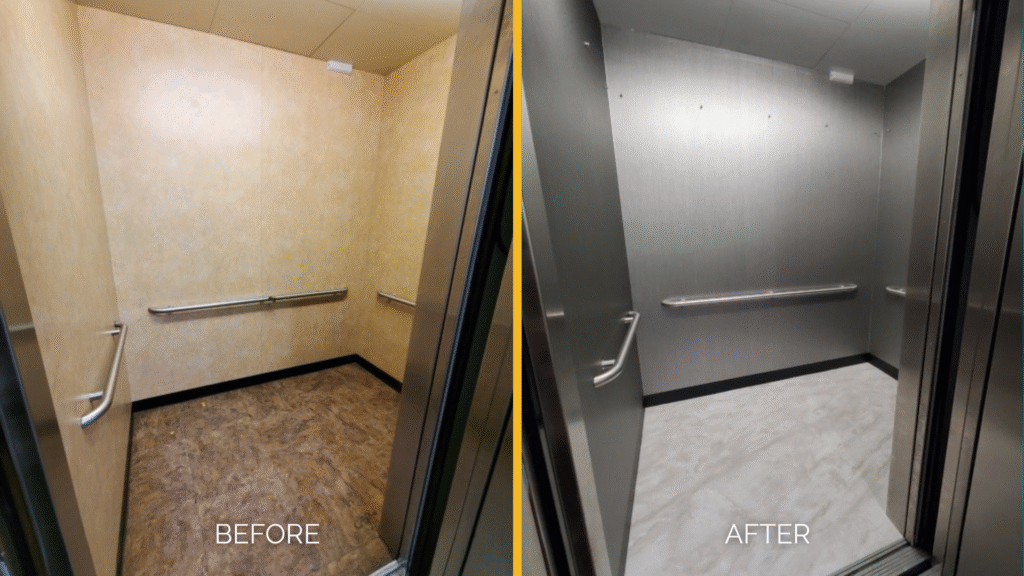Elevators are no longer just functional spaces. They have become design statements that reflect a building’s character, whether in a hotel, office, or multifamily property. Outdated finishes can leave a negative impression, while modern interior design trends can instantly elevate tenant and guest experience. Luckily, with elevator interior refinishing using architectural film, property managers can bring these trends to life without the cost of full renovations.

The Rise of Minimalism
Minimalism has dominated interior design for years, and elevators are no exception. Clean lines, neutral palettes, and smooth finishes give elevators a contemporary look. Refinishing outdated patterns with solid-color or subtle-texture films creates a modern aesthetic that resonates with today’s design-conscious occupants.

Warm Woods and Biophilic Influence
Natural elements are at the forefront of design trends. Wood-inspired architectural films bring warmth, sophistication, and comfort to elevator interiors. Combined with greenery in lobbies or common areas, they create a seamless flow that supports biophilic design, a key driver in wellness-focused buildings.

Luxury Metals and Textures
Gold, bronze, and brushed metallics are trending across hospitality and office projects. Installing metal-patterned architectural films offers a high-end look without the weight and expense of real metals. Textured surfaces such as fabric-look films add tactile interest, elevating the passenger experience.
Sustainable and Future-Proof Choices
Design trends are also driven by sustainability. Architectural film refinishing minimizes material waste and supports LEED initiatives, making it a smart choice for environmentally responsible projects.
Conclusion
Keeping elevator interiors aligned with design trends is essential for modern properties. Refinishing with architectural film offers the perfect balance of affordability, speed, and style, ensuring elevators move from dated to contemporary with ease.

